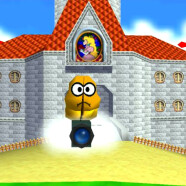Camera Logic Review in SMB3
Hey guys, what’s up? I’m here today with a quick post, to talk about how important is the Camera Behavior in games, more specific in Super Mario Bros 3 (SNES). The idea of this post came from a class that we had in Detailed Design Document. We are writing our full document about one of our games that we pitched before, but this time writing specific details, and complete information. One of the topics are the Three C’s (Character, Camera and Control).
By Camera in games, we need to consider all type of details, for each new situation of the game. What I’m trying to say is: probably everybody knows how the Camera “acts” in the game – since we play games for so long 😛 – but I think we never actually pay attention in how much information and properties we need to execute, to have a good camera behavior in our games. For example, always considering what is the main camera / system; if there is other cameras in the game; when and where are they used; and how do they work.
For that, here I am with one awesome video that I saw online on youtube, explaining everything about the camera /viewport behavior of Super Mario Bros 3. As the creator of the video said: “There are essentially two types of camera behaviors in SMB3: Free-moving, in which the camera follows Mario, keeping him in the center of the screen (vertically and horizontally) except when doing so would place part of the viewport outside of the map; and Auto-scrolling, in which the camera moves automatically along a predefined path at a predetermined speed (first just horizontally with more complex paths introduced later). The left edge of the screen pushes Mario along, the right edge prevents progress and the bottom edge becomes a bottomless pit (instant death).”
Check the video below, and for more info about it’s properties, check his blog: Mimeo in the Tumbleverse
I hope you enjoy it! Stay tuned and don’t forget to leave a comment, please! 😀 Cyaaa!







Looks complicated
Yeah, it is. A lot of complicated and important details. lol